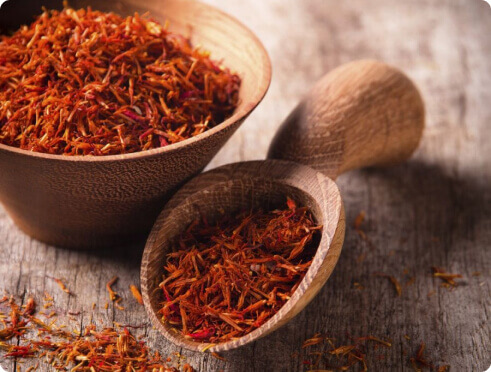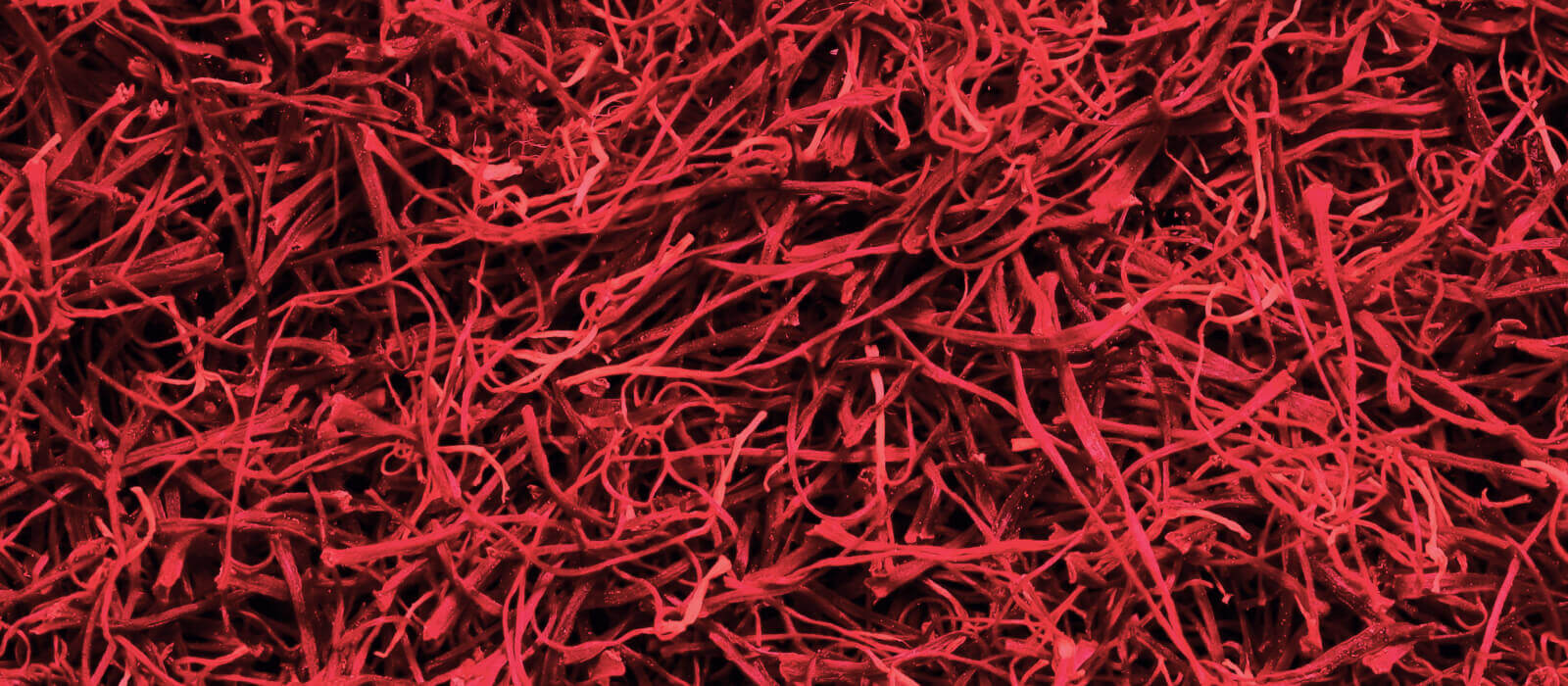The peculiarities of using saffron in culinary practice

Spices help enhance the flavor of a dish, making it unique, and one of the most beloved spices by chefs worldwide is saffron. It’s used in kitchens across different countries, adding to desserts, meat dishes, seafood, and even beverages.
Saffron (from the crocus flower) brings unique flavor qualities. It’s an incredibly aromatic spice, giving dishes a special taste, distinct aroma, and a hint of golden hue.
What does saffron taste like?
The taste of saffron is complex and multifaceted. It’s simultaneously sweet, earthy, and floral. That’s why saffron is often used in baking: it’s loved for adding to lemon pies and other pastries. Seafood also pairs well with saffron, such as shrimp dishes. And don’t forget the traditional Spanish paella.
Note: Often, what you might find labeled as “saffron” could actually be a cheap imitation. You can tell it’s fake if it has a metallic or plastic smell and a bitter taste. Adding such a spice to your dishes can be harmful to your health.
Benefits and advantages of saffron
 This unique spice has been used not only in culinary practices but also in traditional medicine. For thousands of years, from Persian to Indian cultures, saffron has been applied to treat asthma, coughs, fevers, insomnia, depression, Alzheimer’s disease, skin conditions, and cardiovascular diseases.
This unique spice has been used not only in culinary practices but also in traditional medicine. For thousands of years, from Persian to Indian cultures, saffron has been applied to treat asthma, coughs, fevers, insomnia, depression, Alzheimer’s disease, skin conditions, and cardiovascular diseases.
Knowing about the medicinal properties of this spice, saffron was brewed as tea or added to milk. It was also used on the scalp to reduce hair loss.
In modern times, many experts believe in the calming, anti-inflammatory, and antidepressant effects of saffron, using it in the comprehensive treatment of various conditions.
Dishes with saffron in the culinary traditions of different countries
Saffron is most commonly used in sweet dishes. In Europe and North America, it’s added to a wide variety of confectionery products:
- Cakes and pastries;
- Ice cream;
- Muffins;
- Jellies;
- Custards and creams.
Additionally, in European countries, saffron is added to main dishes featuring various types of fish, meat, legumes, and vegetables.
In India, saffron is added to desserts most commonly, especially in yogurts and puddings. In the East, this spice is an essential component in meat, chicken, vegetable, and rice dishes.
Moreover, saffron pairs well with dairy products. It not only enhances their taste but also aids in their digestion.
Saffron holds a special place in the preparation of alcoholic beverages as well. It provides a unique aroma and color to liqueurs, infusions, and cocktails. The ability of saffron to impart a golden color to dishes has found its application in the preparation of food with white meats, fish, and poultry. The dish looks very appetizing while remaining low in calories and diet-friendly.
How is saffron added to dishes?
The spice can be used either whole (the entire stem) or just its strands. Saffron can also be ground into a powder, which is then soaked in water. To ensure optimal dosage, the spice is dissolved in water or mixtures with a low alcohol content. This makes it easier to measure the required amount of saffron.
Preparing a saffron-infused water or alcohol solution is very simple: soak the powder in warm water at a ratio of 1 gram per 120 milliliters of liquid. If preparing an alcohol solution, additional dilution with water is recommended. After 15-20 minutes, the resulting liquid can be added to main dishes or confectionery products.
The optimal amount of saffron varies for different dishes. For baking, usually, 0.1 grams of the spice is added before baking or during dough kneading. Similarly, for fish and meat dishes, the same amount of saffron is added a few minutes before they are ready.




